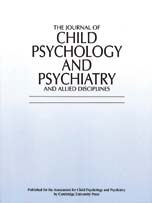Family Therapy for Adolescent Anorexia Nervosa: The Results of a Controlled Comparison of Two Family Interventions
Published online by Cambridge University Press: 19 October 2000
Abstract
This paper reports the results of a randomised treatment trial of two forms of outpatient family intervention for anorexia nervosa. Forty adolescent patients with anorexia nervosa were randomly assigned to “conjoint family therapy” (CFT) or to “separated family therapy” (SFT) using a stratified design controlling for levels of critical comments using the Expressed Emotion index. The design required therapists to undertake both forms of treatment and the distinctiveness of the two therapies was ensured by separate supervisors conducting live supervision of the treatments. Measures were undertaken on admission to the study, at 3 months, at 6 months and at the end of treatment. Considerable improvement in nutritional and psychological state occurred across both treatment groups. On global measure of outcome, the two forms of therapy were associated with equivalent end of treatment results. However, for those patients with high levels of maternal criticism towards the patient, the SFT was shown to be superior to the CFT. When individual status measures were explored, there were further differences between the treatments. Symptomatic change was more marked in the SFT whereas there was considerably more psychological change in the CFT group. There were significant changes in family measures of Expressed Emotion. Critical comments between parents and patient were significantly reduced and that between parents was also diminished. Warmth between parents increased.
- Type
- Research Article
- Information
- The Journal of Child Psychology and Psychiatry and Allied Disciplines , Volume 41 , Issue 6 , September 2000 , pp. 727 - 736
- Copyright
- © 2000 Association for Child Psychology and Psychiatry
- 414
- Cited by


